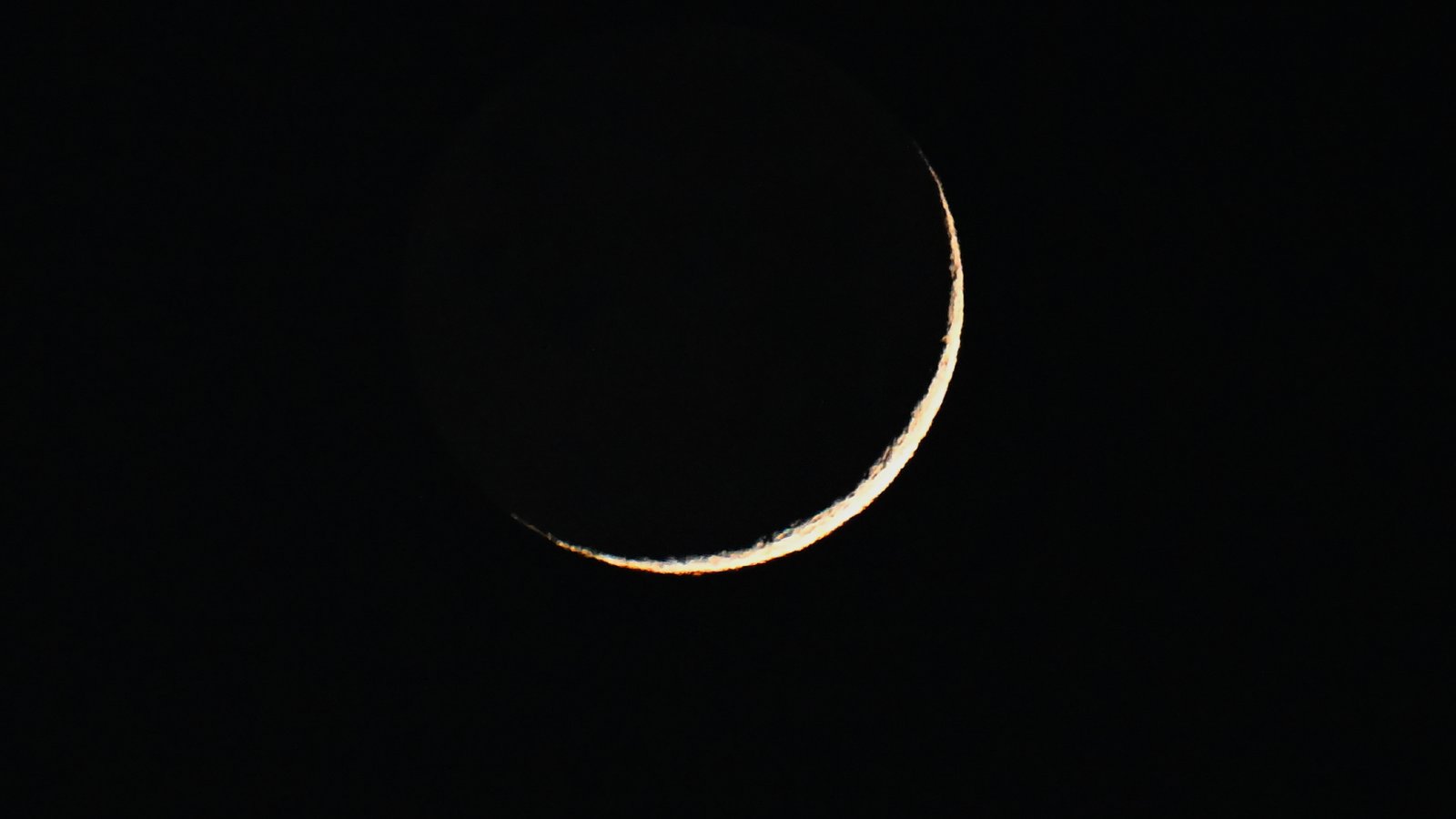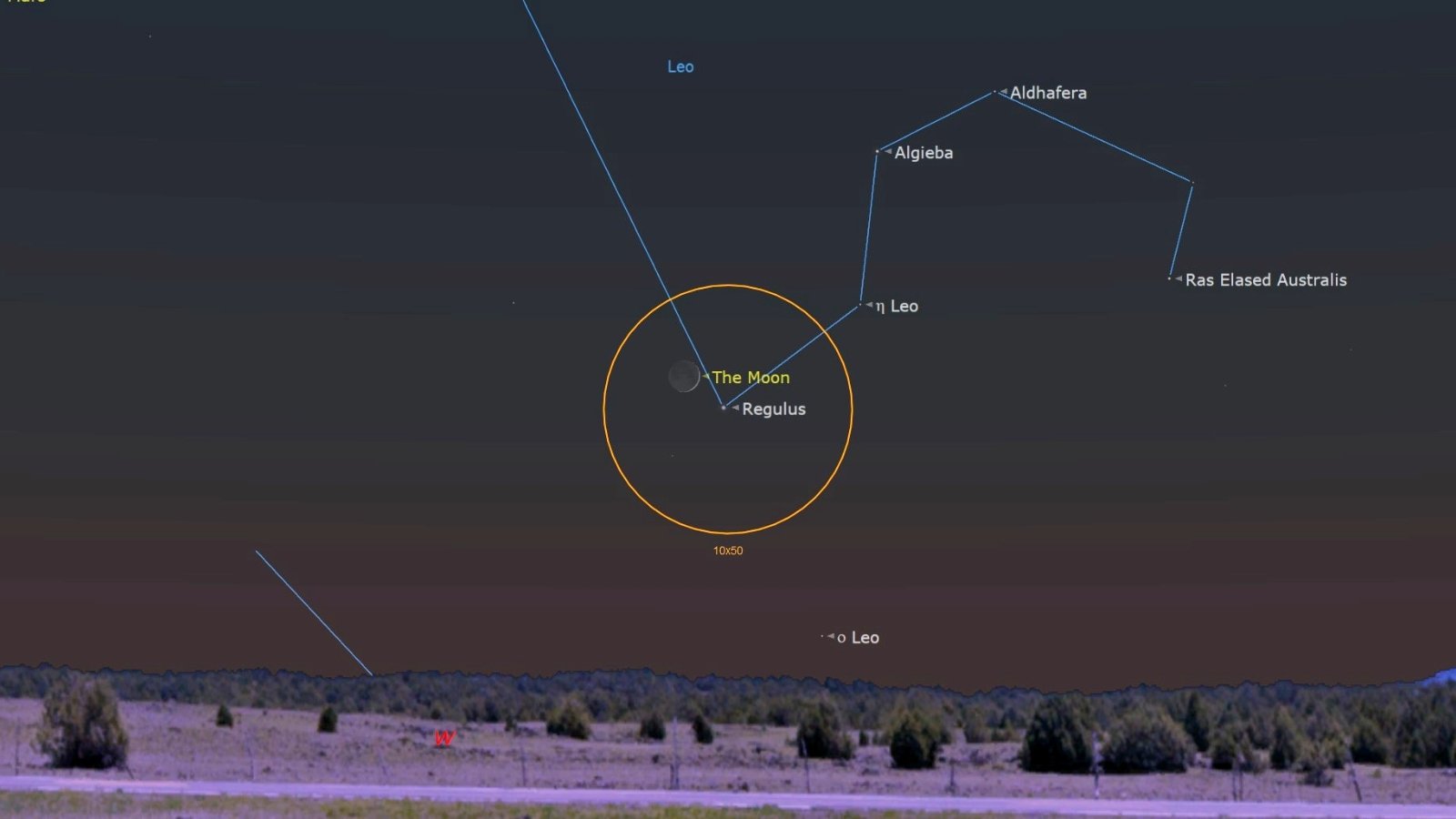
(Image credit: Photo by Tayfun Coskun/Anadolu via Getty Images)
The slender waxing crescent moon will shine near the ‘Kingly’ star Regulus in the constellation Leo on the night of July 26, offering a photogenic — if challenging — target for those with a clear view of the western horizon.
Look west at sunset to find the razor-thin crescent moon hanging less than 10 degrees above the horizon. Regulus will appear as a blue-white point of light roughly 1 degree to the lower right of the moon’s glowing edge, becoming more prominent as the sun slips further below the horizon.
You can estimate distances in the night sky by holding your hand out at arm’s length in front of your face. The width of the tip of your little finger equals about 1 degree and your clenched fist spans approximately 10 degrees.
The moon’s 7% illuminated disk could prove tricky to spot against the evening sky and will swiftly set alongside Regulus, a little over an hour after the sun. If you do spot the moon, you may notice a soft glow infusing its night side. This phenomenon, known as ‘Earthshine’, or the ‘Da Vinci Glow’, only occurs around the new moon phase, when the lunar disk is well positioned to be bathed in sunlight reflected off Earth’s surface and atmosphere, revealing the presence of ancient lava plains darkening the lunar surface.

By the next evening, July 27, the moon will have traveled away from Regulus along the ecliptic — the path the moon, sun and planets trace through our sky — moving on a trajectory that will see it pass close to Mars in the evening sky early next week.
Stargazers hoping to explore the wonders of the post-sunset realm should have a look at our guides to the best telescopes and binoculars for viewing the planets, stars and deep sky objects that populate the cosmos. Photographers looking to capture the night sky should also check out our roundups of the best cameras and lenses for astrophotography.
Editor’s Note: If you capture a picture of the moon with Regulus and want to share it with Space.com’s readers, then please send your photo(s), comments, and your name and location to spacephotos@space.com.
Join our Space Forums to keep talking space on the latest missions, night sky and more! And if you have a news tip, correction or comment, let us know at: community@space.com.


